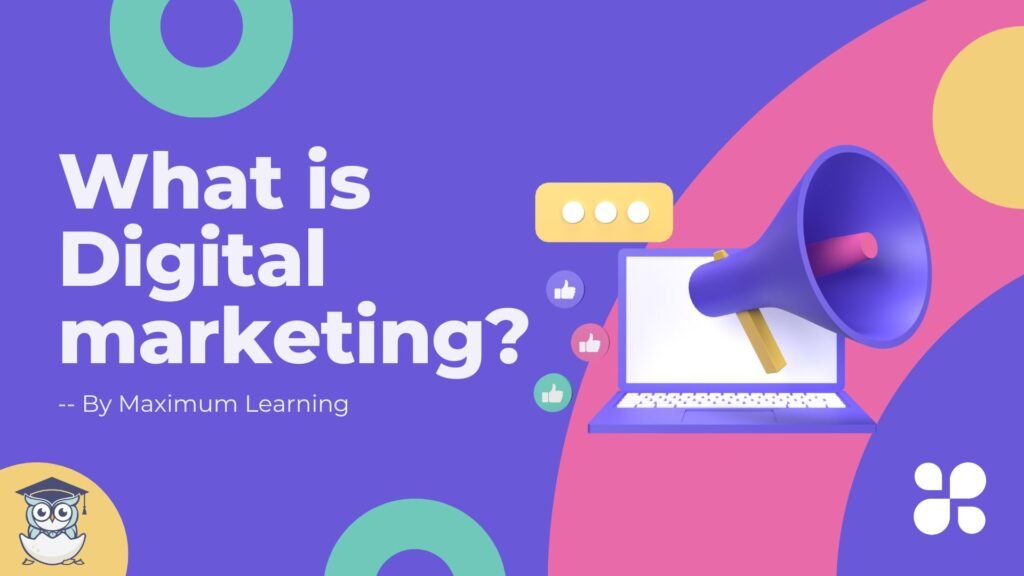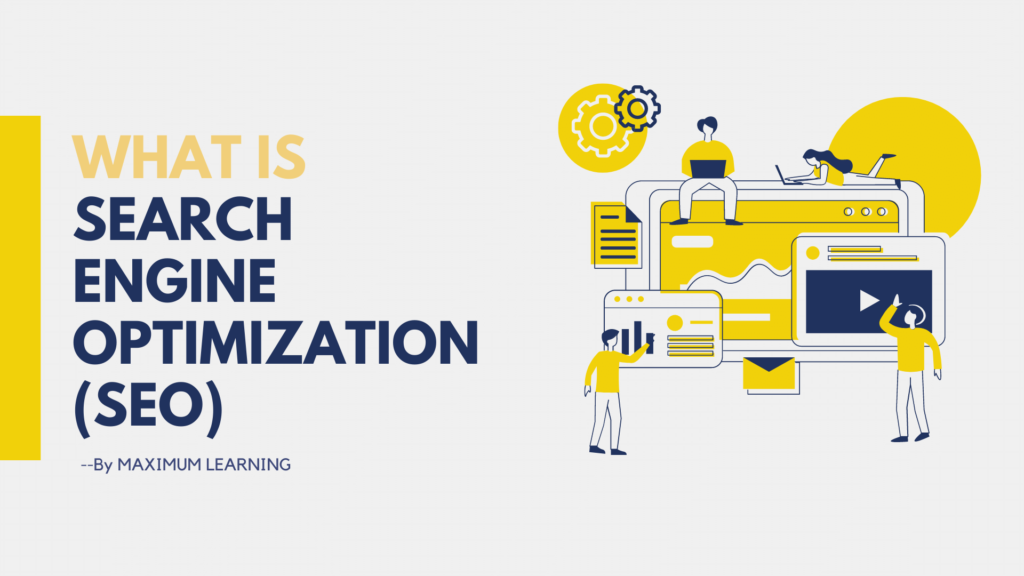In the fast-paced world of digital marketing, staying ahead in the search engine game is imperative for online success. One cornerstone of this endeavor is mastering On-Page SEO, a set of techniques that fine-tune your website for maximum visibility. In this in-depth guide, we will unravel the intricacies of On-Page SEO optimization techniques, providing you with actionable insights to elevate your website’s performance on search engine result pages (SERPs).
Understanding On-Page SEO
What is On-Page SEO?
On-page SEO, short for on-site search engine optimization, is a fundamental aspect of digital marketing that involves optimizing various elements directly on a website to improve its visibility, relevance, and overall performance in search engine results. This optimization is geared towards making the website more attractive and understandable to both users and search engine algorithms. The primary focus of on-page SEO is to enhance the individual pages of a website, ensuring they align with the intent of search queries and provide a positive user experience. Here’s an elaboration on the key components of on-page SEO:
Content Optimization:
One of the central elements of on-page SEO is optimizing the content on each page. This involves using relevant and targeted keywords naturally within the content. The content should be high-quality, informative, and address the needs of the users. A well-crafted, engaging content not only attracts visitors but also signals to search engines that the page is valuable and relevant.
Title Tags and Meta Descriptions:
On-page SEO includes optimizing title tags and meta descriptions. These are the HTML elements that provide concise information about the content of a page. Effective title tags should include relevant keywords and accurately represent the page’s topic. Meta descriptions, although not a direct ranking factor, can influence click-through rates, so crafting compelling and descriptive meta descriptions is crucial.
Header Tags (H1, H2, etc.):
Proper use of header tags (H1, H2, etc.) helps structure content and provides clarity to both users and search engines. The H1 tag typically represents the main heading of a page, and subsequent header tags break down the content into sections. Including relevant keywords in headers aids search engines in understanding the content hierarchy.
URL Structure:
Optimizing the structure of URLs contributes to both user-friendliness and search engine interpretation. URLs should be concise, descriptive, and include relevant keywords. A well-organized URL structure enhances the overall user experience and helps search engines index content more effectively.
Internal Linking:
On-page SEO involves strategically incorporating internal links within content. Internal linking helps distribute page authority, establishes content hierarchy, and assists users in navigating through the website. Including anchor text with relevant keywords in internal links adds context and signals the importance of linked pages to search engines.
Image Optimization:
Images play a crucial role in on-page SEO. Optimizing images involves using descriptive file names, adding alt text with relevant keywords, and compressing images for faster page loading times. This not only improves accessibility but also contributes to better rankings in image search results.
User Experience (UX) and Page Speed:
With the increasing use of mobile devices, on-page SEO includes mobile optimization. Websites that are mobile-friendly and responsive to different screen sizes are more likely to rank higher in mobile search results. Google, in particular, considers mobile-friendliness as a ranking factor.
Mobile Optimization:
On-page SEO considers factors related to user experience and page speed. Websites that provide a seamless and enjoyable user experience tend to rank higher in search results. Optimization efforts may involve improving site navigation, reducing page load times, and enhancing overall website responsiveness.
The Significance of On-Page SEO:
On-page SEO plays a pivotal role in shaping the digital presence of a website and is fundamental to achieving organic search success. Its significance extends beyond merely securing higher search engine rankings; it profoundly influences the overall user experience. Here’s an in-depth elaboration on the importance of on-page SEO:
Foundation for Organic Search Success:
On-page SEO serves as the bedrock of a website’s performance in organic search results. By optimizing individual pages for specific keywords and ensuring content relevance, a website is better positioned to be recognized and ranked by search engines. Without effective on-page SEO, other off-page efforts may not yield the desired results, making it a foundational aspect of any comprehensive SEO strategy.
Improved Search Engine Rankings:
The primary objective of on-page SEO is to enhance a website’s visibility in search engine results pages (SERPs). By strategically incorporating relevant keywords, optimizing meta tags, and refining content structure, on-page SEO provides search engines with clear signals about the relevance and value of a page. This, in turn, increases the likelihood of higher rankings for specific queries, driving more organic traffic to the website.
Enhanced User Experience:
On-page SEO goes beyond technical optimization; it focuses on improving the overall user experience. Websites that are user-friendly, well-structured, and provide valuable content tend to rank higher in search results. Elements such as clear navigation, fast page load times, and mobile responsiveness contribute to a positive user experience, keeping visitors engaged and reducing bounce rates.
Content Relevance and Authority:
On-page SEO ensures that the content on a website is not only relevant but also authoritative. By incorporating targeted keywords naturally into high-quality content, a website establishes itself as an authoritative source in its niche. This not only attracts users seeking specific information but also garners trust from search engines, contributing to long-term success.
Increased Click-Through Rates (CTRs):
Optimizing title tags and meta descriptions through on-page SEO efforts makes search results more appealing to users. Well-crafted and compelling meta information encourages users to click through to the website. Higher click-through rates signal to search engines that the content is relevant and engaging, potentially leading to improved rankings over time.
Adaptability to Algorithm Changes:
Search engine algorithms are dynamic and undergo regular updates. On-page SEO practices make a website adaptable to these changes. By staying informed about algorithmic requirements and continuously optimizing content, websites can mitigate the impact of algorithm updates and maintain or improve their search rankings.
Competitive Edge:
In a competitive online landscape, on-page SEO provides a competitive edge. Websites that consistently optimize their content, structure, and user experience are more likely to outperform competitors in search results. This edge can be crucial for attracting and retaining a larger share of the target audience.
Targeted Audience Engagement:
On-page SEO ensures that a website’s content resonates with the target audience. By aligning with user search intent and addressing their needs, businesses can attract a more targeted and relevant audience. This targeted engagement not only drives organic traffic but also increases the likelihood of conversions and customer satisfaction.
Keyword Optimization
Strategic Keyword Placement:
Strategic keyword placement is a fundamental aspect of effective keyword optimization in the field of search engine optimization (SEO). This practice involves identifying relevant keywords and strategically incorporating them into various elements of your website, including content, meta titles, meta descriptions, and headers. The goal is to not only make your content more accessible to search engines but also to align with the intent of users’ search queries. Here’s a detailed elaboration on the importance and execution of strategic keyword placement:
Content Optimization:
In the body of your content, identify key phrases and terms that are relevant to your topic and audience. Integrate these keywords naturally and contextually, ensuring they contribute to the overall flow and readability of the content. Google and other search engines use these keywords to understand the subject matter of your page and to deliver relevant results to users.
Meta Titles:
The meta title, also known as the title tag, is a critical on-page SEO element. It serves as the main headline displayed in search engine results. Strategic keyword placement in the meta title is essential for signaling the primary focus of your page to search engines. Craft a compelling and accurate title that not only incorporates relevant keywords but also entices users to click through to your page.
Meta Descriptions:
Meta descriptions provide a brief summary of your page’s content. While they are not a direct ranking factor, they play a crucial role in attracting clicks from search engine results pages. Include relevant keywords in your meta description to reinforce the connection between the user’s query and the content on your page. Craft a compelling description that encourages users to choose your page over others.
Headers (H1, H2, etc.):
Header tags (H1, H2, etc.) are used to structure content hierarchically. The H1 tag typically represents the main heading of your page. Include relevant keywords in your headers to provide clarity and context to both users and search engines. This practice not only aids in content organization but also contributes to the overall SEO strategy.
Aligning with User Search Intent:
Understanding user search intent is crucial for effective keyword optimization. By placing relevant keywords in strategic locations, you align your content with what users are actively searching for. This alignment enhances the chances of your content being deemed relevant by search engines and increases the likelihood of satisfying user queries.
Avoiding Keyword Stuffing:
While strategic keyword placement is essential, it’s crucial to avoid keyword stuffing. Keyword stuffing, or overloading your content with excessive keywords, can lead to penalties from search engines. Focus on a natural and user-friendly incorporation of keywords, ensuring that they enhance the content’s value rather than disrupt its readability.
Regularly Update and Optimize:
The digital landscape evolves, and so do user behaviors and search engine algorithms. Regularly revisit and update your keyword strategy to stay current with industry trends and user preferences. Monitor the performance of your content and adjust keyword placement as needed to maintain or improve search rankings.
Long-Tail Keywords:
The use of long-tail keywords involves integrating specific and detailed phrases into content to cater to niche searches. Unlike broader keywords, long-tail phrases are more focused, addressing particular user needs or preferences within a specific domain. By incorporating these keywords, businesses can attract targeted traffic—users who are actively searching for precise information or solutions.
The specificity of long-tail keywords not only reduces competition but also increases the likelihood of the content matching the intent of the searcher. This alignment enhances the overall user experience, making visitors more likely to engage and convert. In essence, the strategic incorporation of long-tail keywords is an effective way to refine a digital presence, capturing a specialized audience and improving the chances of conversion.
Content Optimization
High-Quality Content:
Creating high-quality content involves the meticulous crafting of material that is not only compelling but also informative and engaging. Such content serves as a magnet, drawing in users and holding their attention. The goal is to offer valuable information, answers, or entertainment that meets the needs of the audience. By providing content that satisfies user intent, you reduce bounce rates—users are more likely to stay on your page, exploring the content further. This extended engagement sends positive signals to search engines, indicating that your page is not only relevant but also valuable to users. In the eyes of search algorithms, pages with high-quality content are often rewarded with improved visibility and ranking. Therefore, the creation and maintenance of consistently excellent content are crucial for building a reputable online presence and fostering positive interactions with both users and search engines.
Readability and Structure:
To enhance the readability and structure of your content, it’s essential to employ formatting techniques such as short paragraphs, bullet points, and subheadings. Short paragraphs break down information into digestible chunks, preventing overwhelming blocks of text. Bullet points concisely present key details, making information easily scannable. Subheadings organize content into sections, guiding readers and offering a quick overview of the page’s structure.
A well-structured page not only improves user experience by making content more accessible but also assists search engine crawlers in understanding and indexing the information efficiently. When both users and search engines can navigate and comprehend your content easily, it contributes to better rankings and a more positive overall online presence. Thus, prioritizing readability and structure is fundamental for creating content that resonates effectively with your audience while maintaining visibility in search engine results.
HTML Optimization
Title Tags:
Crafting unique and descriptive title tags for each page is crucial for optimizing search engine visibility and influencing click-through rates. Title tags serve as concise previews in search results, providing users with a glimpse of your page’s content. By incorporating relevant keywords and accurately summarizing the page’s essence, you not only enhance the chances of attracting the right audience but also encourage clicks. A strategic approach to title tags can significantly impact the overall effectiveness of your SEO efforts, making it imperative to invest time and thought into creating compelling titles that capture user interest and improve search engine performance.
Meta Descriptions:
In addition to creating unique title tags, crafting persuasive meta descriptions is equally vital for optimizing click-through rates. Meta descriptions offer a brief yet impactful summary of your content, appearing below the title in search results. A well-crafted meta description not only informs users about the content but also entices them to click through to your website by highlighting its relevance and value. By incorporating compelling language and relevant keywords, you can improve the chances of capturing user attention and driving more traffic to your site. Strategic meta descriptions contribute significantly to a comprehensive and effective SEO strategy.
Header Tags:
Implementing header tags (H1, H2, H3, etc.) in your content is essential for hierarchical organization, enhancing both readability and SEO. These tags structure content, providing a clear hierarchy of information. Beyond aiding readers in navigating the material, search engines use header tags to understand content relevance and importance. By strategically incorporating keywords into headers, you can further optimize your page for search engine algorithms, improving visibility and emphasizing the significance of key sections. This dual benefit of organized content and enhanced SEO underscores the importance of using header tags as a fundamental aspect of content optimization.
Image Optimization
File Names and Alt Text:
Optimize image file names and provide descriptive alt text. This enhances accessibility and helps search engines understand the content of your images.
Image Compression:
Compress images to improve page load speed, a crucial factor in both user experience and search engine rankings.
URL Structure
Descriptive URLs:
Create SEO-friendly URLs that reflect the content of the page. Avoid generic or lengthy URLs, as concise and descriptive ones are more user-friendly.
Hyphenated URLs:
Use hyphens to separate words in URLs. This makes them more readable and contributes to search engine friendliness.
Internal Linking:
Link to relevant internal pages within your content. This not only enhances navigation for users but also spreads link equity across your website.
Quality External Links:
Include high-quality external links to authoritative sources. This signals to search engines that your content is well-researched and reliable.
Mobile Optimization
Responsive Design:
Ensure your website is responsive and optimized for mobile devices. Mobile-friendly pages are favored by search engines and provide a better user experience.
Page Load Speed:
Optimize page load speed for both desktop and mobile versions. Users and search engines prefer fast-loading pages.
User Experience (UX) Optimization
User-Friendly Design:
Create a user-friendly design that facilitates easy navigation. A well-structured site improves user experience and encourages longer visits.
Reduce Pop-ups:
Minimize intrusive pop-ups that can hinder user experience. Google may penalize sites with disruptive pop-ups.
Regular Monitoring and Updates
Google Analytics:
Regularly monitor your website’s performance using Google Analytics. Track user behavior, identify strengths and weaknesses, and make informed improvements.
Content Updates:
Keep content fresh by updating and adding new information. Regular updates signal to search engines that your site is active and relevant.
Mastering On-Page SEO optimization techniques is an ongoing journey, but by implementing the strategies outlined in this guide, you’ll be well on your way to enhancing your website’s visibility, user experience, and overall search engine rankings. Stay vigilant, adapt to evolving SEO trends, and watch your digital presence soar to new heights.



